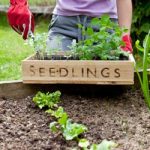Top 6 Flowering Shrubs That Will Transform Your Landscape This Spring
As the days grow longer and the earth awakens from winter’s chill, there’s no better time to refresh your landscape with flowering shrubs that bring vibrant color, fragrance, and seasonal charm. Whether you’re looking for a bold burst of yellow, delicate spring fragrance, or continuous blooms, these six must-have shrubs will elevate your garden and make your outdoor space shine.
At D.R. Snell Nursery, we’ve carefully selected the best spring-flowering shrubs that thrive in Maryland’s Zone 6 & 7 climate. These beauties will add structure, seasonal interest, and curb appeal—all while being easy to grow.
Let’s explore the top six flowering shrubs to plant this season!
1. Forsythia – A Golden Welcome to Spring
Few plants signal the arrival of spring as boldly as Forsythia. This fast-growing, deciduous shrub erupts in bright yellow flowers along its arching branches in early spring, often before its leaves appear.
🌼 Why You’ll Love It:
- One of the first plants to bloom in spring—a true sign of warmer days ahead!
- Low-maintenance and adaptable to most soil types.
- Attracts pollinators like bees emerging from winter dormancy.
🌱 Planting Tip: Forsythia thrives in full sun to partial shade and prefers well-drained soil. Prune lightly after blooming to maintain shape and encourage new growth.
📍 Find fresh Forsythia plants now at D.R. Snell Nursery!
2. Andromeda (Pieris japonica) – Early Spring Elegance
If you’re looking for a shrub that brings grace and fragrance to your landscape, Andromeda (Pieris japonica) is a perfect choice. This evergreen beauty produces cascading clusters of delicate white or pink flowers in early spring, with glossy green foliage that looks great year-round.
🌸 Why You’ll Love It:
- Beautiful, bell-shaped flowers bloom in early spring.
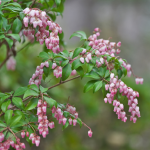
- Evergreen foliage provides four-season interest.
- Deer-resistant and pollinator-friendly.
🌱 Planting Tip: Andromeda prefers part shade and acidic, well-draining soil. Add peat moss or compost when planting to help maintain soil acidity.
📍 Stop by D.R. Snell Nursery to pick up your own Andromeda shrub today!
3. Flowering Quince – A Burst of Spring Color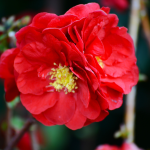
Flowering quince (Chaenomeles) is an underrated spring gem, boasting stunning red, WHpink, or coral blossoms in early spring, even before its leaves emerge. This hardy, thorny shrub also produces small, apple-like fruit that can be used for jellies.
🔥 Why You’ll Love It:
- One of the first shrubs to bloom, with vibrant red, pink, or orange flowers.
- Drought-tolerant and nearly indestructible—perfect for low-maintenance gardens.
- Attracts early-season pollinators and adds a unique texture to landscapes.
🌱 Planting Tip: Quince thrives in full sun and well-drained soil. Once established, it requires minimal care and is highly drought-tolerant.
📍 Visit D.R. Snell Nursery to grab this stunning, easy-care spring bloomer!
4. Reblooming Azaleas – Spring & Beyond
Why settle for just one season of blooms when you can enjoy azaleas that rebloom from spring to fall? Reblooming azaleas, like the Encore® series, provide lush, vibrant flowers multiple times a year, making them an excellent choice for continuous color.
💖 Why You’ll Love It:
- Gorgeous, trumpet-shaped blooms in shades of pink, red, white, or purple.
- Reblooms in spring, summer, and fall—long-lasting color for your landscape.
- Compact varieties are great for foundation plantings or container gardens.
🌱 Planting Tip: Azaleas prefer part shade and acidic soil. Use an acidic fertilizer to keep them thriving and producing repeat blooms.
📍 Find stunning reblooming azaleas at D.R. Snell Nursery this spring!
5. Dwarf Fothergilla – A Showstopper for Every Season
Dwarf fothergilla (Fothergilla gardenii) is a multi-season superstar. In early spring, it bursts with fragrant, white bottlebrush flowers, followed by lush green foliage in summer, and spectacular orange, red, and yellow fall color.
🍁 Why You’ll Love It:
- Fragrant white flowers attract pollinators in early spring.
- Incredible fall foliage—one of the best for autumn color!
- Dwarf variety is perfect for smaller gardens and borders.
🌱 Planting Tip: Fothergilla thrives in full sun to partial shade and loves moist, acidic soil. It pairs beautifully with azaleas and rhododendrons.
6. Spring-Blooming Camellias – Elegance That Lasts
Spring-blooming camellias (Camellia japonica) bring timeless beauty to the garden with their lush, rose-like blooms and glossy evergreen foliage. As winter fades, these stunning flowers burst open in shades of pink, red, and white, adding elegance and charm to the landscape.
🌸 Why You’ll Love It:
✔ Gorgeous early-season blooms when little else is flowering.
✔ Evergreen foliage provides year-round interest and structure.
✔ Attracts pollinators and adds a touch of romance to any garden.
🌱 Planting Tip: Camellias thrive in partial shade with well-draining, acidic soil. Mulch well to retain moisture and protect roots from temperature swings. Pair them with azaleas, ferns, or hydrangeas for a stunning layered look!
Bonus: Viburnum – The Ultimate Four-Season Shrub
No spring garden is complete without viburnum, a versatile, hardy shrub that offers clusters of fragrant flowers in spring, lush green foliage in summer, berries in fall, and striking winter interest. With so many varieties available, there’s a viburnum for every garden style!
🌿 Why You’ll Love It:
- Fragrant spring blooms in shades of white or pink.
- Attracts birds with its colorful fall berries.
- Some varieties have stunning red and burgundy fall foliage.
🌱 Planting Tip: Viburnums thrive in full sun to partial shade and are adaptable to various soil conditions. Some varieties are semi-evergreen, adding winter structure to the landscape.
📍 Explore our selection of viburnums at D.R. Snell Nursery and find the perfect variety for your garden!
Transform Your Landscape This Spring!
Adding flowering shrubs to your landscape is the perfect way to kick off the gardening season with vibrant color, pollinator-friendly blooms, and year-round beauty. Whether you want the bright yellow of forsythia, the elegance of andromeda, or the continuous blooms of reblooming azaleas, we have the perfect selections for your yard.
🌷 Visit D.R. Snell Nursery today to explore our freshest spring shrubs, get expert planting advice, and start designing your dream landscape! 🌿






 contrast. Its compact size makes it a great choice for smaller gardens or urban settings.
contrast. Its compact size makes it a great choice for smaller gardens or urban settings.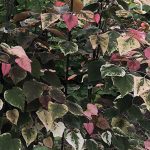
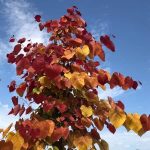 green, and gold, ensuring year-round appeal.
green, and gold, ensuring year-round appeal.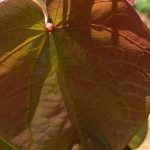 purple foliage that matures into a rich green. Its upright growth habit and colorful appeal make it an excellent choice for a focal point in the garden.
purple foliage that matures into a rich green. Its upright growth habit and colorful appeal make it an excellent choice for a focal point in the garden.










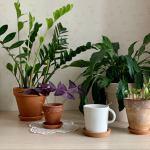



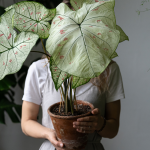
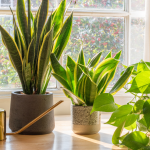
 hollyhocks, delphiniums, and foxgloves. Whether you’re starting from scratch or refining an existing space, this guide will walk you through everything you need to know about planning a romantic, flower-filled cottage garden.
hollyhocks, delphiniums, and foxgloves. Whether you’re starting from scratch or refining an existing space, this guide will walk you through everything you need to know about planning a romantic, flower-filled cottage garden.






